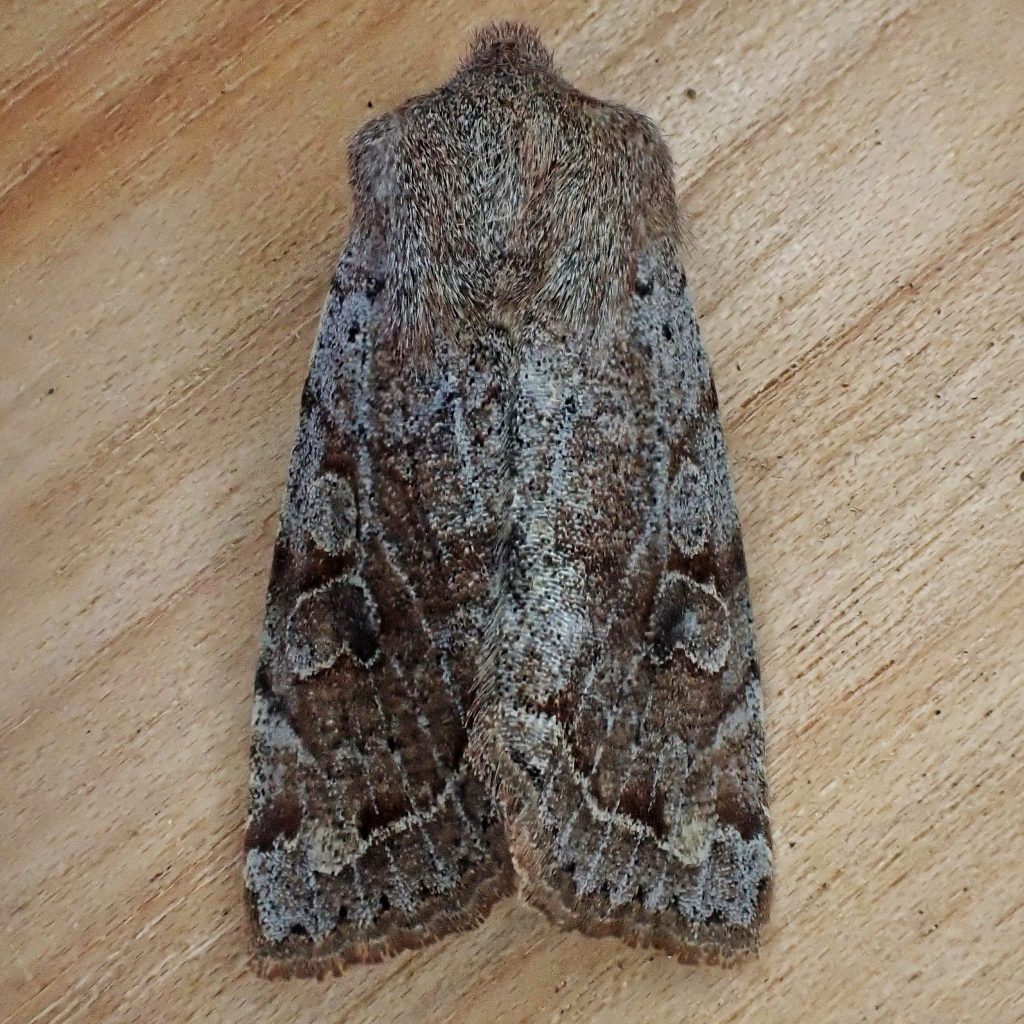
Orthosia hibisci is a highly variable and very common spring flying Noctuid moth. But, despite that variability a gestalt forms after a dozen or so, and they become quite recognizable. Part of that is that the forewing spots are distinctly outlined in a paler color, and are as round and kidney shaped as orbicular and reniform would suggest.
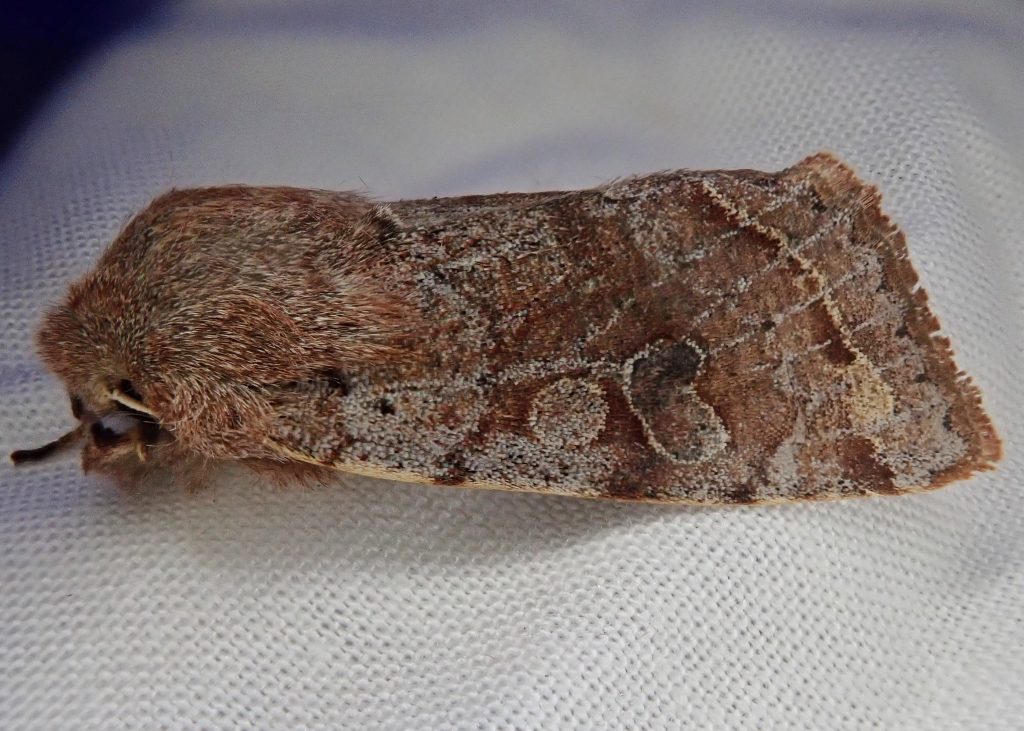
They tend to be a quiescent moth, and once they’ve landed they usually do not stir. When I was first learning to sort out their variations I would have several out to be photographed and compared, and they never seemed bothered by my prodding. In fact, because they were so inert, I thought the first batch had died, but an hour after I released them on the front porch they had all moved to new positions behind Pam’s potted plants. Turns out Orthosia hibisci are just phlegmatic moths.
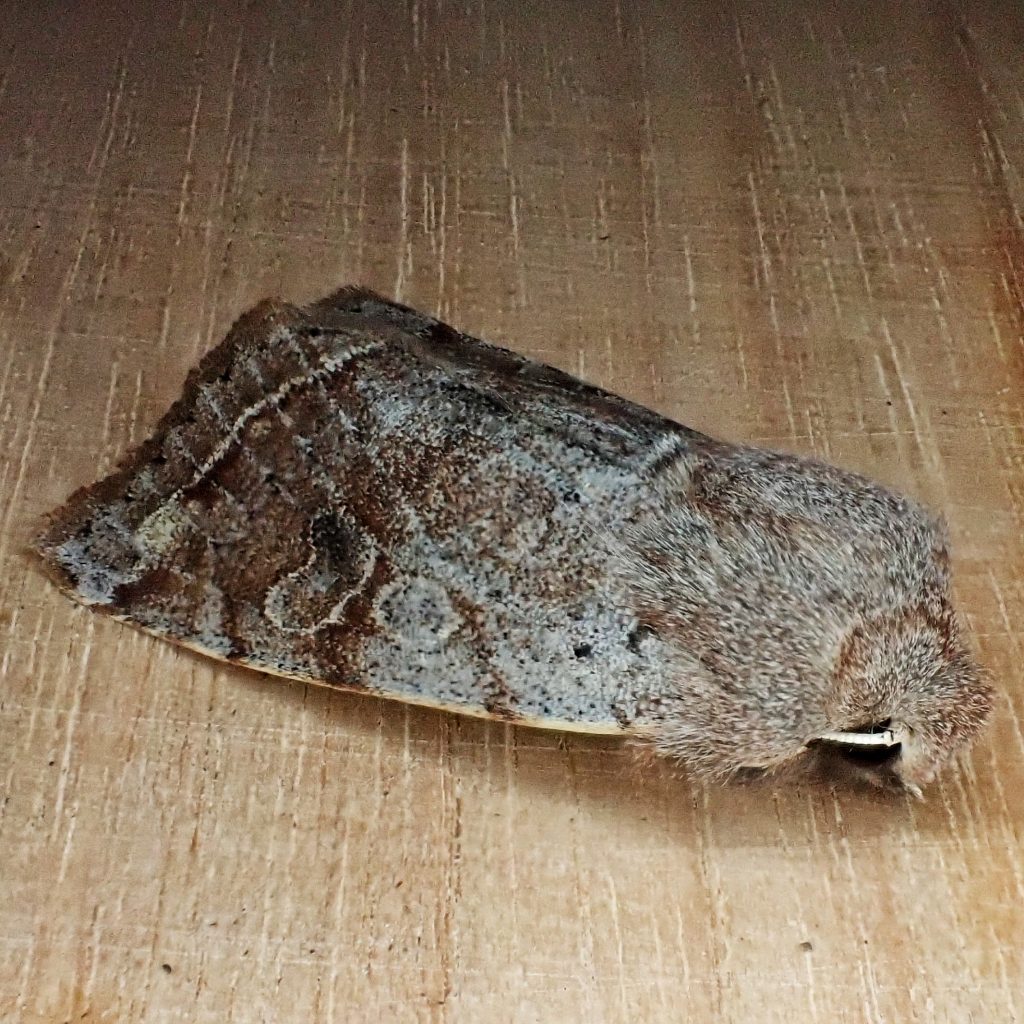
Description-Highly variable species; medium sized (fw 17-19mm), mottled grey to brown, usually with a diffuse, irregular medial band of reddish brown; lacks claviform spot; orbicular spot more or less round, outlined in light grey; reniform spot kidney shaped, outlined in light grey; and the subterminal line is light colored.
Similar species–Orthosia pacifica is mottled yellowish tan; O. revicta has a claviform spot, and the transverse lines are double and filled with ground color.
Habitat– Forests, woodlands, shrubby areas, up to high elevations.
Range-North America north of Mexico, but absent from the central plains; found throughout our region except for the most arid locales.
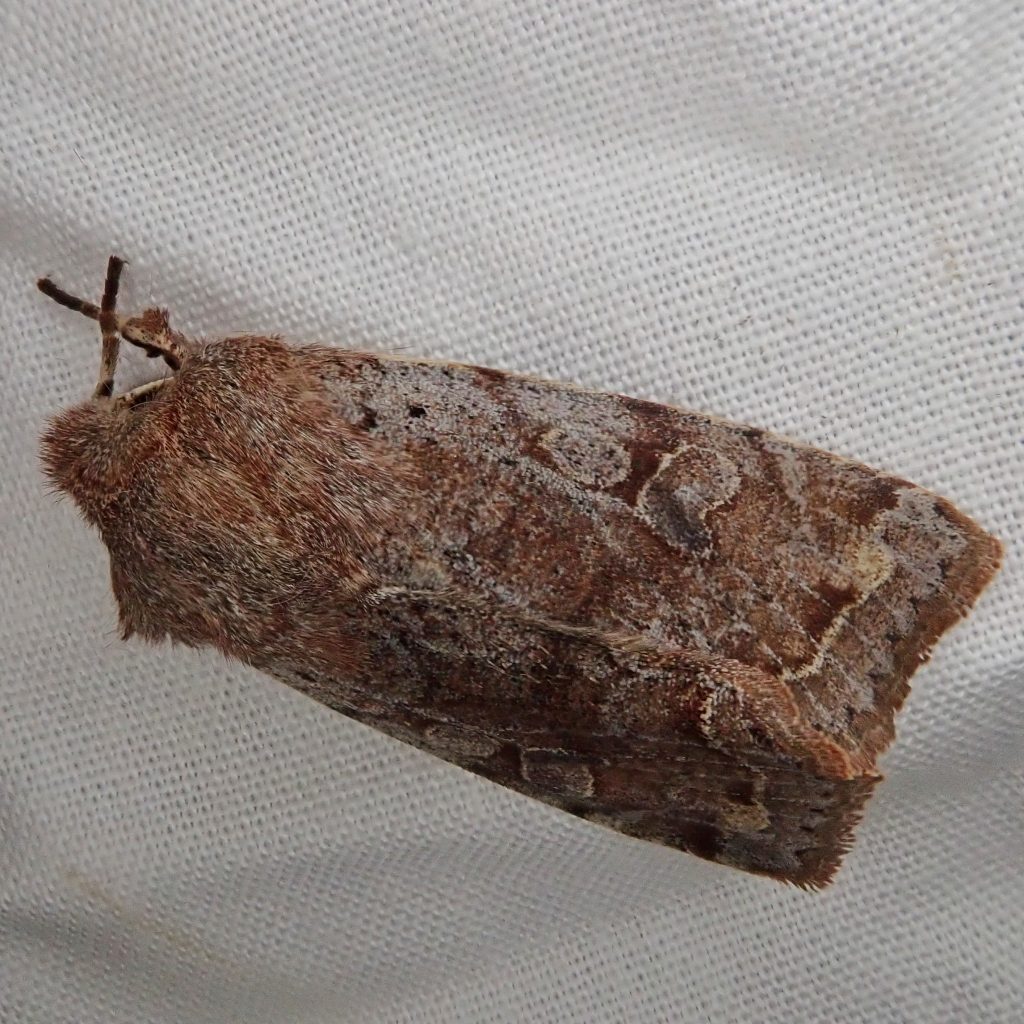
Eats– Larvae are generalists and feed on maples, oaks, alders, cottonwoods, willows and many other hardwoods; may be a pest in fruit orchards, particularly apples, cherries, and blueberries.
Reproduction-Eggs may be laid soon after adult emergence; larvae fully grown by summer, and bury themselves to pupate.
Adults active-Overwinter as pupa; adults emerge as early as February and fly until May.
Etymology of names–Orthosia celebrates the goddess Diana in Greek mythology, who was called Diana Orthosia by the Byzantines. The specific epithet hibisci refers to the fact that Guenee noticed that some of the caterpillars lived on hibiscus. The common name refers to the appearance of the caterpillars.
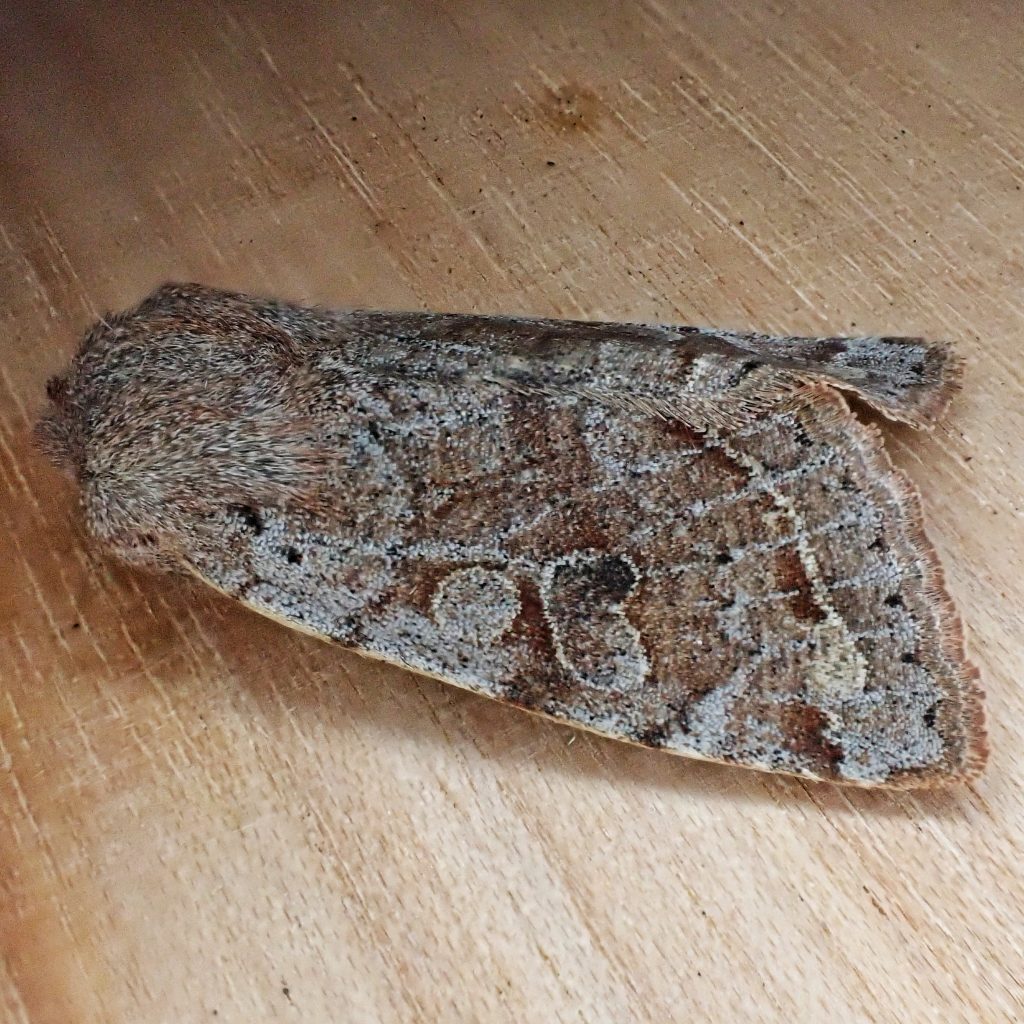
https://bugguide.net/node/view/4865
http://mothphotographersgroup.msstate.edu/species.php?hodges=10495
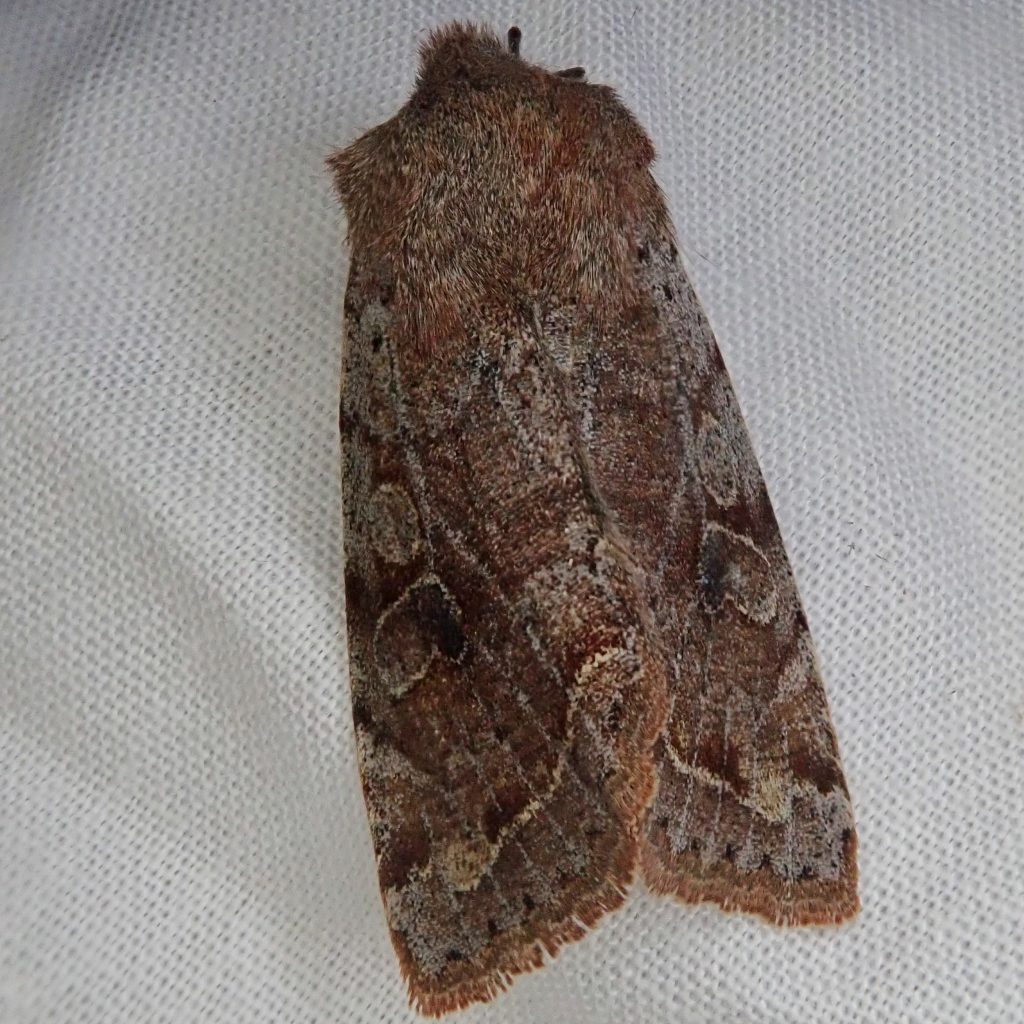
When I your title including hibisci, I immediately assumed it was a flower – as I grew up in Florida with many many hibiscus plants in our yard. So are these moths really found on hibiscus?
The cats are generalists, so it’s possible. But they seem to prefer shrubs and trees.
Thanks for your usual lucid post,. Will be looking for them soon. One of the first moths we learned because, as you noted, it is one of the earliest to emerge – along with Hoary Pinion.
Thanks Ken! I’ve never seen a Hoary Pinion, because they are birch feeders, and they occur north and east of my home. But I hope to find one someday!